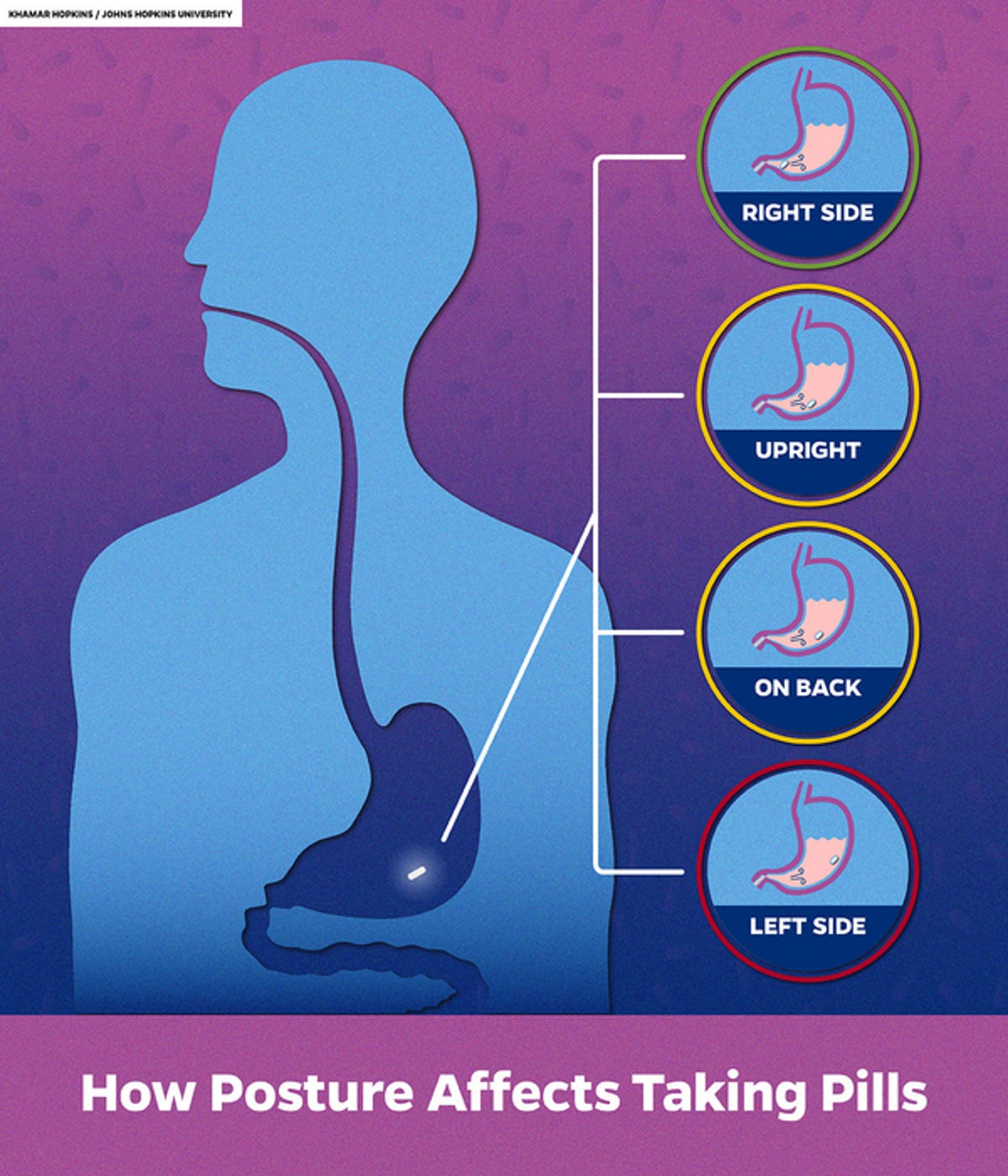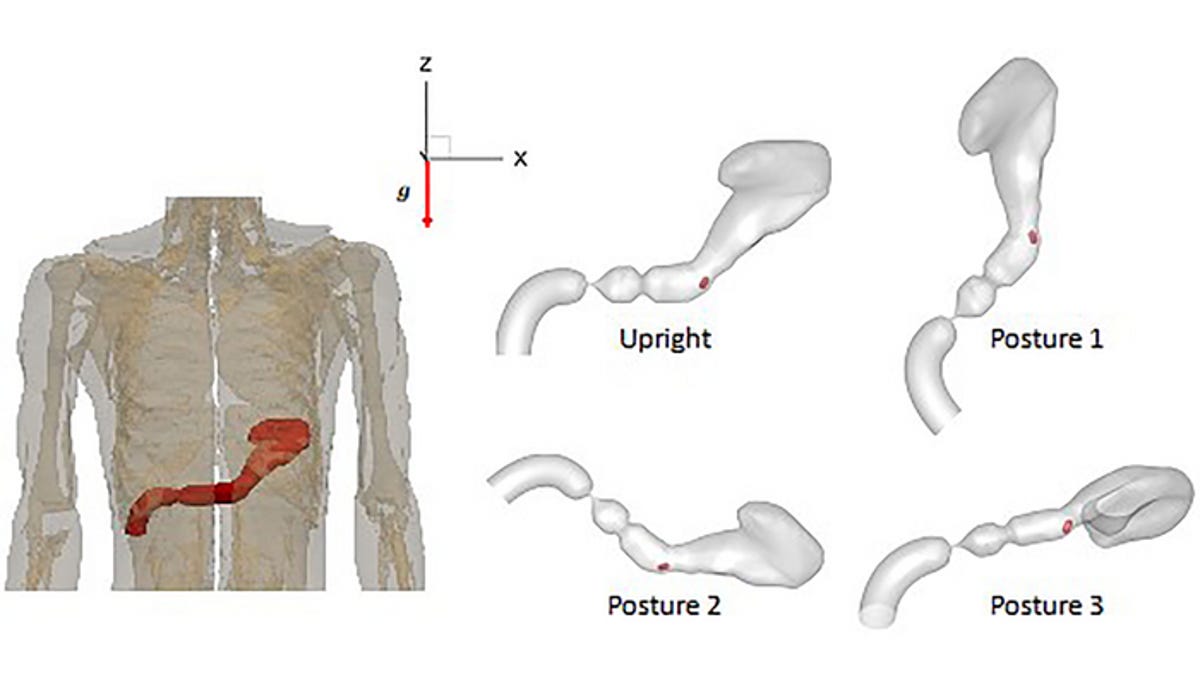By studying computer simulations based on realistic anatomy and morphology of the human stomach, Johns Hopkins University researchers might’ve uncovered the ideal way to position your body while swallowing pills. Results of the team’s findings were published last week in the journal Physics of Fluids.
In a nutshell, the team’s model – dubbed StomachSim – revealed that orally ingesting medication while lying on your right side helps gravity carry the drug to the deepest part of the stomach, called the terminal antrum. Once there, StomachSim showed, the pills dissolved in about 10 minutes.
On the other hand, an upright posture indicated pills dissolving in about 23 minutes, essentially tied with lying straight back. Lying on the left side was the worst option. Per the researchers, it took over 100 minutes for simulated pills to dissolve when StomachSim was written to hold this posture.


Your posture when taking a pill makes a big difference in how fast your body absorbs the medicine, scientists say.
Khamar Hopkins/Johns Hopkins University“We were very surprised that posture had such an immense effect on the dissolution rate of a pill,” Rajat Mittal, a Johns Hopkins engineer, expert in fluid dynamics and senior author of the paper, said in a press release. “I never thought about whether I was doing it right or wrong, but now I’ll definitely think about it every time I take a pill.”
The life of a pill
When you orally ingest a pill, the drug has to make its way into the stomach, then the stomach has to eject contents of that drug into the intestines. Along the way, the medication dissolves and gets absorbed by the body. But until the latter bit happens, the pills can’t get to work – and the pill’s trajectory toward this step is pretty complicated because the stomach is naturally asymmetrical.
“Oral administration is surprisingly complex, despite being the most common choice for drug administration,” Mittal said in a separate release. “The motion of the stomach walls and the flow of contents inside determine the rate at which [medication] dissolves.” On top of that, unique properties of the pill and stomach contents play a major role in that process, too.
Nonetheless, Mittal explained, scientists still have a limited understanding of what, precisely, affects this whole pill dissolution pathway, and decoding those factors is especially important for people taking pills who have stomach disorders such as gastroparesis, which slows down stomach-emptying.
Well, according to the new study, posture is one of those crucial factors.


This diagram shows the position of the stomach in an upright body, and then how it’s oriented in the various postures considered in the study.
Rajat Mittal“The simulations show that changes in posture can potentially have a significant (up to 83%) effect on the emptying rate of the [pill] into the duodenum,” the study authors write, referring to the first part of the small intestine.
“Posture itself has such a huge impact…it’s equivalent to somebody’s stomach having a very significant dysfunction as far as pill dissolution is concerned,” Mittal said.
And going forward, StomachSim is expected to reach far and wide, the researchers believe.
That’s because this model is thought to be the first time physiological simulations have combined both pill movement and drug dissolution dynamics to dissect how an active drug operates during its lifetime in the human body. Mittal and colleagues also intend to tap into their invention and delve into predicting how changes in stomach biomechanics impact the way the body absorbs drugs, how food is processed in the stomach and the effect of posture and gastroparesis in particular on digestion.
Farther into the future, the study authors also emphasize, “our ultimate goal is, indeed, to develop a multiscale model to incorporate interactions in the cellular level” because StomachSim, as it is, does have some limitations – for instance, the absence of tonic contraction, aka periodic movements that occur in the stomach.


